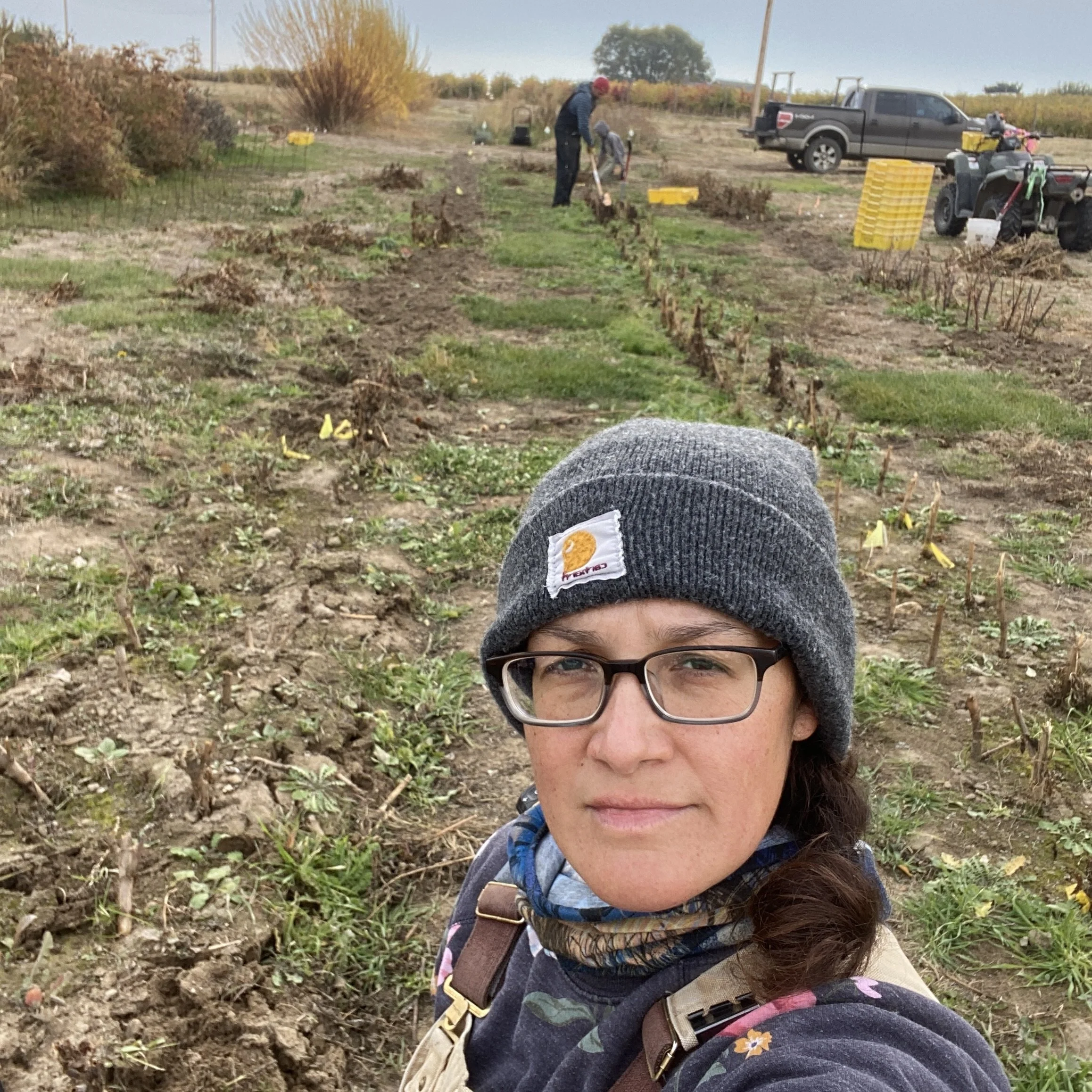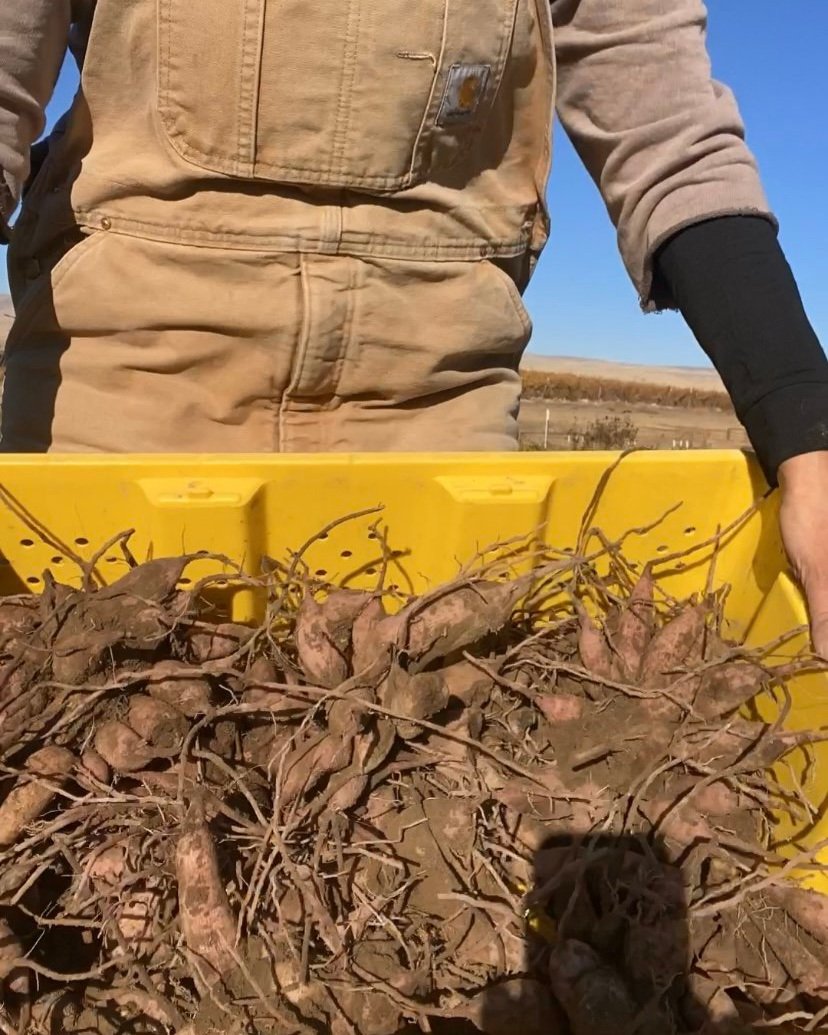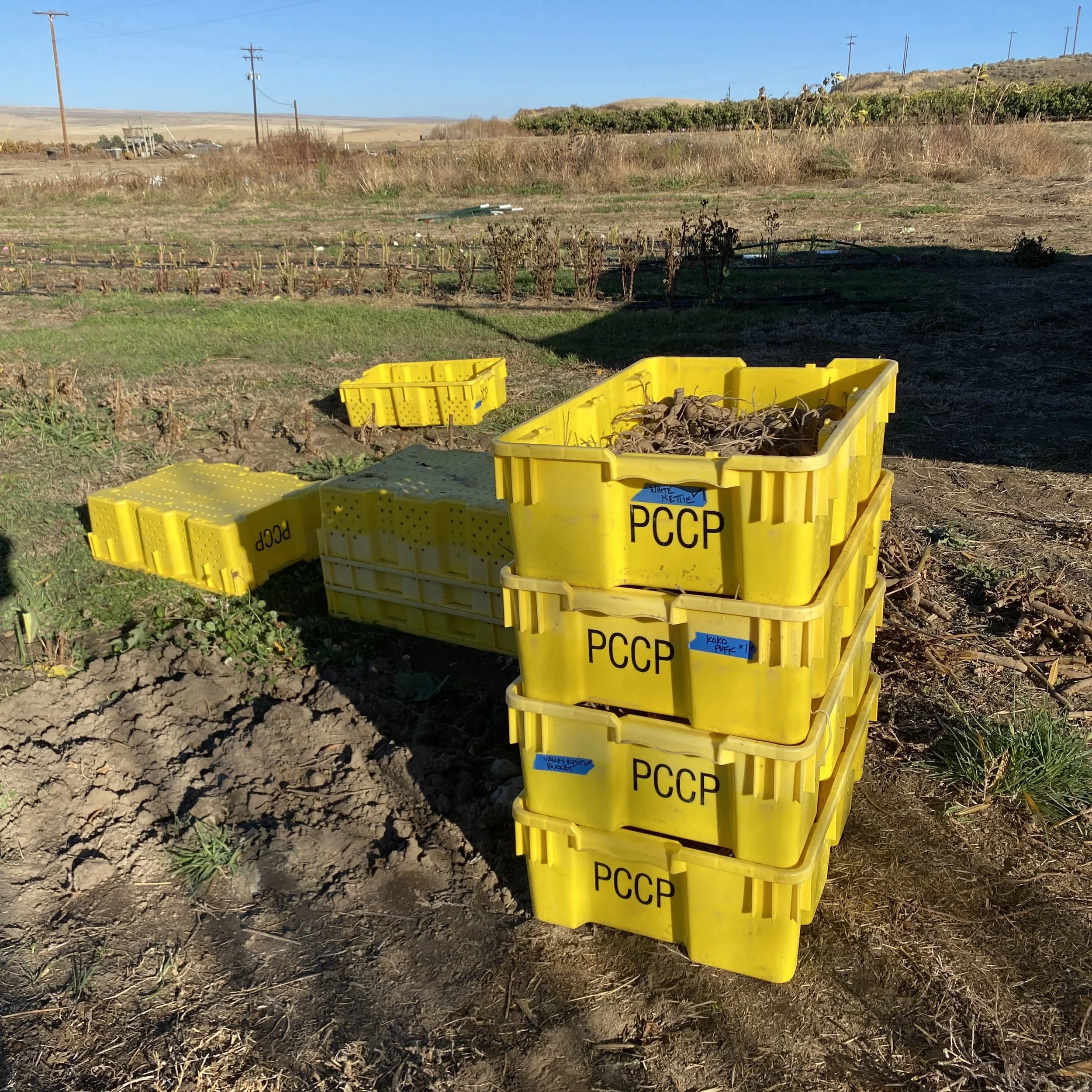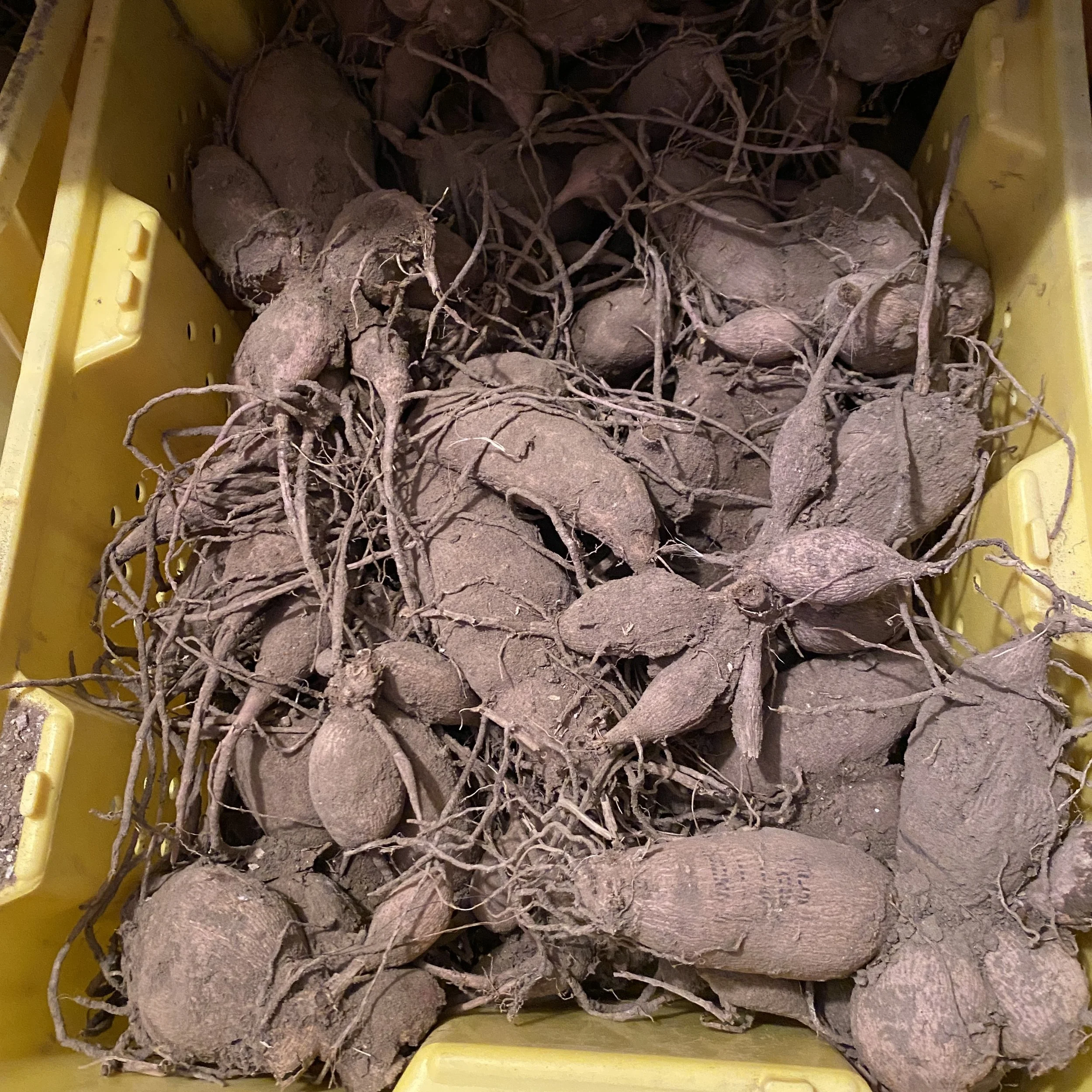Healthy Dahlia Protocol
-
There are a multitude of viruses in dahlia plants even when they appear healthy.
We are trying to do our part and will continue to our best to keep plants and tuber stock as healthy as possible.
During the growing season, dahlia plants are visually inspected for disease and viruses.
Any plants showing signs of virus, look weak, sickly, or unhealthy are bagged and thrown away. They are never composted.
Newly purchased dahlia tubers are planted in a “quarantine zone” to grow out so they can be inspected during the growing season.
This allows us to make sure we are not bringing in leafy or crown gall or visible viruses that could infect our entire stock of tubers.
The flower farm is inspected by the WSDA.
-
The dahlias have a strict harvesting protocol.
Multiple cups of a 10% bleach solution and multiple clippers are used during dahlia flower harvesting.
Clippers are rotated between individual plants and sanitized in a bleach solution.
We do not host any Dahlia u-pick events.
-
At this time, our farm manually digs tuber clumps at the end of the season. This allows us to visually inspect tubers for any crown gall or leafy gall.
We keep a large bucket of a 10% bleach solution and multiple sets of tools that get sanitized between cultivars.
If there are any signs of leafy or crown gall, the tuber clump, cultivar family, and closely planted tubers get bagged and immediately thrown in the garbage. All tools, crates, hands, or anything else that came into contact with the infected tubers are sanitized.
The infected bed is not used for dahlia planting for at least a year.
-
Tuber clumps are stored whole and unrinsed in open crates in a temperature monitored storage room. They get visually inspected weekly and more often once the winter weather dips to freezing.
In late winter, tuber clumps get pulled out and rinsed before dividing. The tubers are once again inspected.
Any tools used to divide tubers are sanitized between clumps.
Tubers are then stamped for identification and re-stored until shipping or planting time.
-
Growing healthy dahlias is important to keeping pests at bay.
Plant diseases and viruses can be spread easily by insects chewing from plant to plant.
I plant a diverse and evolving set of crops that bring in many beneficial insects, birds, and other wildlife that feed on pests.
Regular fertilizing, watering, and inspection schedule is maintained to keep dahlias healthy.
There are times when heat, drought, and other elements of nature beyond our control weaken healthy dahlias.
The pests can end up damaging crops despite our best efforts.
Pests and diseases are part of farming and this is why regular inspecting and culling is part of the protocol to maintain clean and healthy tuber stock.
Hand digging tubers
Bin full of freshly dug dahlia tubers
Stacked bins full of tubers
Tubers in storage





